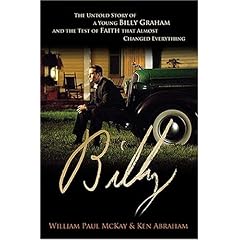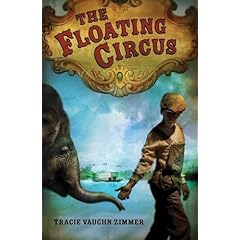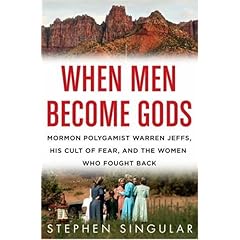I received a review copy of this book from Thomas Nelson Publishers as a result of their seemingly controversial Book Review Bloggers program. In return for the book, I agreed to write a review for my blog and for one other site. I’m not sure what the issue is with that agreement, but there it is up front and transparent.

As for the book itself, subtitled The Untold Story of a Young Billy Graham and the Test of Faith That Almost Changed Everything, it reads like the movie spin-off that it is. It’s not badly written at all, but it’s also not prize-winning biography either. I enjoyed reading about Billy Graham’s early life and ministry, but I felt as if I were reading a screenplay, scene by scene descriptions of Graham’s life, with actual dialog from the movie. After I read the book, I looked at some clips and trailers from the movie, and sure enough it looks as if the book IS the movie, essentially.
There’s one section I’m not so sure about, just because I’m not sure how it would have been filmed. At the climax of the story, Billy wrestles with his doubts brought on by the apostasy of his friend and mentor, Charles Templeton. In the book, the author describes how Satan and his demons battle the hosts of heaven for possession of Billy’s soul. All these unseen powers wait for the decision that will determine whether Billy Graham will become a spokesman of God’s truth, allowing God to change hearts and lives all around the world, or whether he will give in to his own doubts and fears and insecurities and become ineffective for the kingdom of God. It’s a dramatic scene, but I don’t know whether the movie actually shows demons and angels, hovering, waiting for one man’s crisis of the soul to be resolved.
I do know that I have a lot of respect and admiration for evangelist Billy Graham. I enjoyed reading his story even though it was difficult to know how biographically accurate the story was. There is a disclaimer in the front of the book which says:
“This book is the unauthorized retelling of a true story and is based on actual events. Certain items have been adapted for dramatic effect, and some artistic license has been taken to assist in the flow of the storyline.”
I’m really not sure what that means as far as the integrity of the facts in the story, and that uncertainty bothered me as I read. Did Charles Templeton really film an interview with a TV reporter near the end of his life from his hospital bed? Did Billy Graham really experience a life-changing “encounter with the Holy Spirit” after a meeting with Welsh evangelist Stephen Olford? Was there a reconciliation scene between Billy Graham and Charles Templeton before Templeton’s death? More importantly, was there a reconciliation between Templeton and his God before Templeton died? I don’t know since those particular events in the book may have been “adapted for dramatic effect.”
Bottom line, I liked the book, but I wouldn’t recommend it as a source for factual information about the early life of Billy Graham. And the movie, which I haven’t seen, might be a better way to assimilate the story. The audience for this novelization of Billy Graham’s early years is probably limited to fans only —like me.









